Discover 35 hidden attractions, cool sights, and unusual things to do in Gdańsk (Poland). Don't miss out on these must-see attractions: National Maritime Museum, Oliwa Cathedral, and St. Mary's Church. Also, be sure to include Main Town Hall in your itinerary.
Below, you can find the list of the most amazing places you should visit in Gdańsk (Pomeranian).
Table of Contents
National Maritime Museum
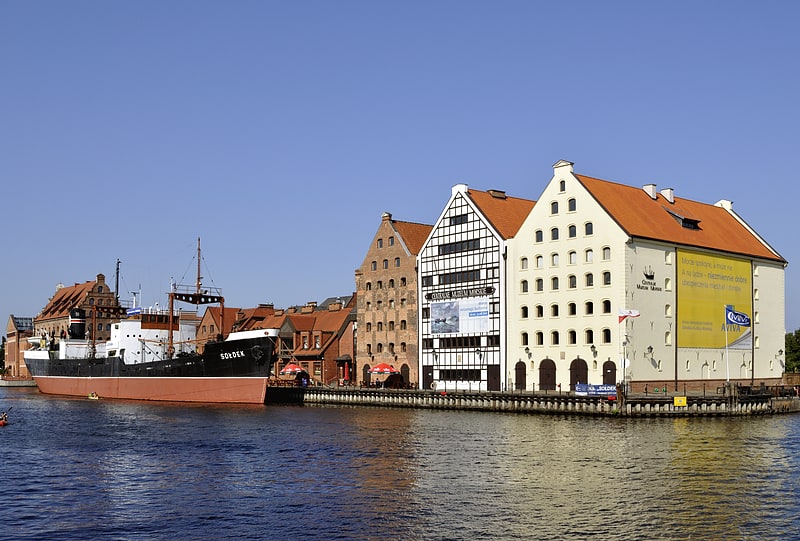
Also known as: Narodowe Muzeum Morskie w Gdańsku
Museum in Gdańsk, Poland. The National Maritime Museum in Gdańsk is a maritime museum in Gdańsk, Poland, established on 1 January 1962. It is dedicated to gathering, researching and preserving artifacts and documents concerning ship transport, international trade, fishing and culture of people working at sea, rivers and those ashore – as well as the dissemination of knowledge on maritime history of Poland and its economy through the ages.[1]
Address: Ołowianka 9-13, 80-751 Gdańsk
Oliwa Cathedral
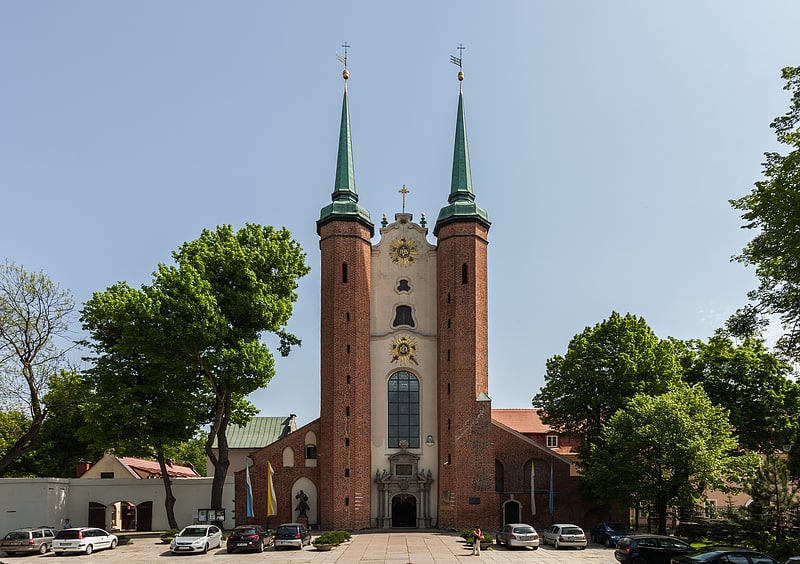
Also known as: Bazylika archikatedralna w Gdańsku-Oliwie
Historic cathedral with a giant organ. Gdańsk Oliwa Archcathedral is a church in Gdańsk, Oliwa, Poland that is dedicated to The Holy Trinity, Blessed Virgin Mary, and St. Bernard.[2]
Address: Biskupa Edmunda Nowickiego 5, 80-330 Gdańsk
St. Mary's Church
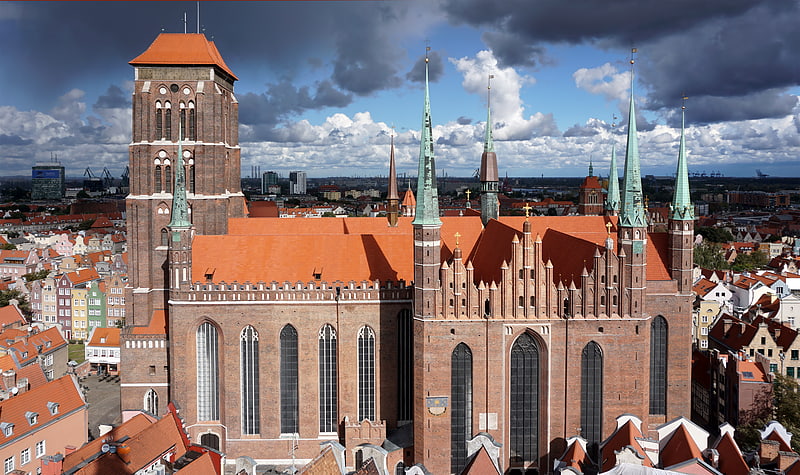
Also known as: Bazylika konkatedralna Wniebowzięcia Najświętszej Maryi Panny w Gdańsku
Vast, Gothic-style brick landmark. St. Mary's Church, or formally the Basilica of the Assumption of the Blessed Virgin Mary, is a Brick Gothic Catholic church located in central Gdańsk, Poland. With its volume between 185,000 m3 and 190,000 m3 it is currently one of the two or three largest brick churches in the world. Only San Petronio Basilica in Bologna, comprising 258,000 m3 is larger, Munich Frauenkirche and Ulm Minster also comprise 185,000 to 190,000 m3.
Between 1536 and 1572 St. Mary's Church was used for Catholic and Lutheran services simultaneously. From the 16th century until 1945 it was the second largest Lutheran church in the world.
It is 105.5 metres (346 ft) long, and the nave is 66 metres (217 ft) wide. Inside the church is room for 25,000 people. It is an aisled hall church with a transept. It is a co-cathedral in the Roman Catholic Archdiocese of Gdańsk, along with the Oliwa Cathedral.[3]
Address: Podkramarska 5, 80-834 Gdansk
Main Town Hall
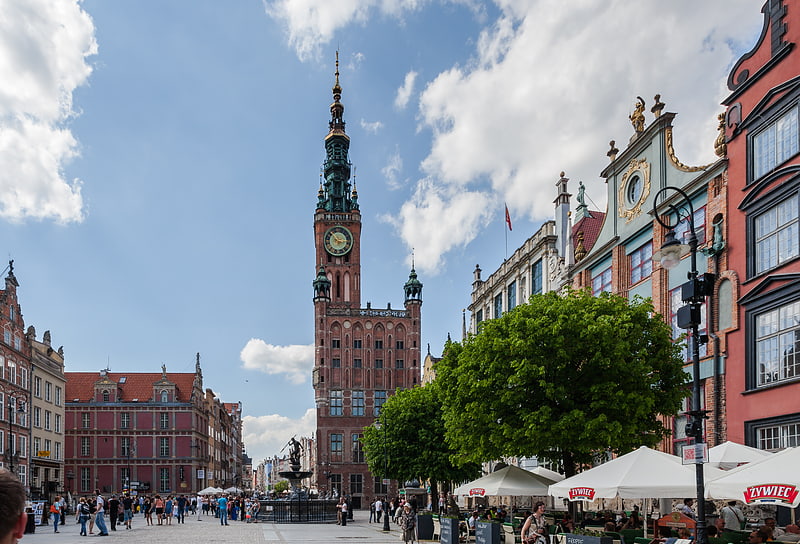
Also known as: Ratusz Głównego Miasta w Gdańsku
City or town hall in Gdańsk, Poland. Gdańsk Main Town Hall is a historic Ratusz located in the Gdańsk Main City borough of Śródmieście. It is one of the finest examples of the Gothic-Renaissance historic buildings in the city, built at the intersection of Ulica Długa and Długi Targ, in the most popular part of Gdańsk. The Main Town Hall in Gdańsk houses the History Museum of the City of Gdańsk.[4]
Address: Długa 46, 80-831 Gdańsk
Green Gate
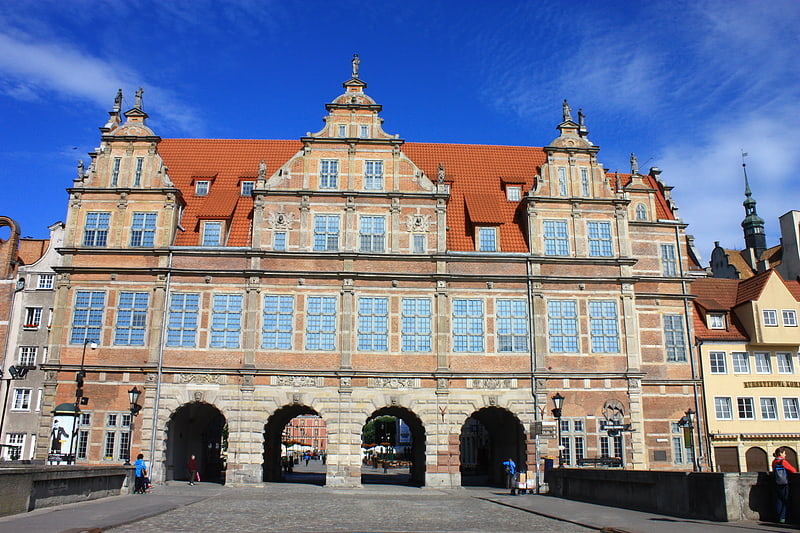
Also known as: Brama Zielona
Grand 16th-century city gate with museum. The Green Gate in Gdańsk, Poland, is one of the city's most notable tourist attractions. It is situated between Long Market and the River Motława.[5]
Address: Długi Targ 24, 80-828 Gdańsk
Abbot's Palace
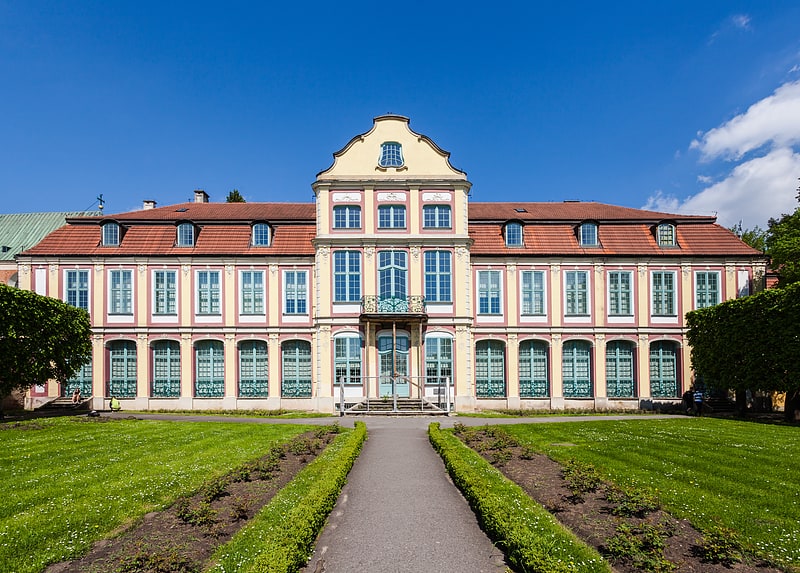
Also known as: Pałac Opatów w Oliwie
Palace in Gdańsk, Poland. The Abbots' Palace in Oliwa is a rococo palace in Oliwa, a quarter of Gdańsk. The first portion of the palace, the "Old Palace" was constructed in the 15th century. Later, in the first half of the sixteen hundreds a "New Palace" was added, which served as the residency of the then abbot of the Cistercians, Jan Grabiński. The final additions to the palace were made between 1754 and 1756, and were funded by another Cistercian abbot, Jacek Rybiński.
After the partitions of Poland the area became part of Prussia, in 1831 real estate of the Cistercians was secularized and the palace became property of the House of Hohenzollern. From 1796 until 1836 the Bishops of Ermland (Warmia), Karl von Hohenzollern-Hechingen and Joseph von Hohenzollern-Hechingen resided in the Palace. It remained empty until 1869 when Maria Anna von Hohenzollern-Hechingen, niece of Joseph, took up residence there. After her death in 1888 the ownership of the palace was taken over by the city of Oliva, which used it for offices and apartments.
During the interwar period of the Free City of Danzig the palace contained a museum which housed exhibitions on the history of the region. The director in charge of the museum was a Nazi activist named Erich Keyser.
In 1945, at the end of World War II (during which time it served as an arms depot) it was set on fire by German troops who sought to clear the terrain in front of the advancing Red Army.
The palace was rebuilt in 1965 through the efforts of the Muzeum Pomorskie w Gdańsku (Pomeranian Museum in Gdańsk). It initially served as the ethnographic department of the museum. In 1972 the Museum was elevated to a status of a National Museum.
Since 1989 the palace contains the Department of Modern Art of the Polish National Museum in Gdańsk. In February 1990 a special gallery devoted to contemporary Polish art was established. Permanent exhibitions include works by Polish artists from 19th and 20th century (painting, sculpture and ceramics). Some of the artists whose works are on display include Zbigniew Pronaszko, Jan Cybis, Henryk Stażewski, Andrzej Wróblewski, Tadeusz Kantor, Jerzy Nowosielski, Alfred Lenica, Jan Lebenstein, Teresa Pągowska, Zdzisław Beksiński, Edward Dwurnik and Władysław Hasior. It also houses the "Promotional Gallery" which exhibits works by young artists.[6]
Address: Cystersów 18, 80-330 Gdańsk
Westerplatte
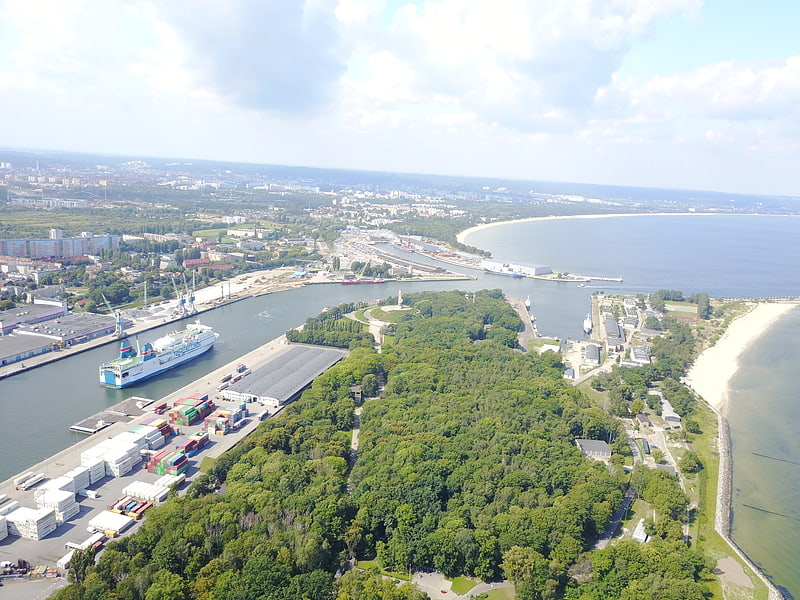
Military site and towering war memorial. Westerplatte is a peninsula in Gdańsk, Poland, located on the Baltic Sea coast mouth of the Dead Vistula, in the Gdańsk harbour channel. From 1926 to 1939, it was the location of a Polish Military Transit Depot, sanctioned within the territory of the Free City of Danzig.
It is famous for the Battle of Westerplatte, which was the first clash between Polish and German forces during the invasion of Poland and thus the beginning and the first battle of World War II.[7]
Address: majora Henryka Sucharskiego, Gdańsk
Long Market
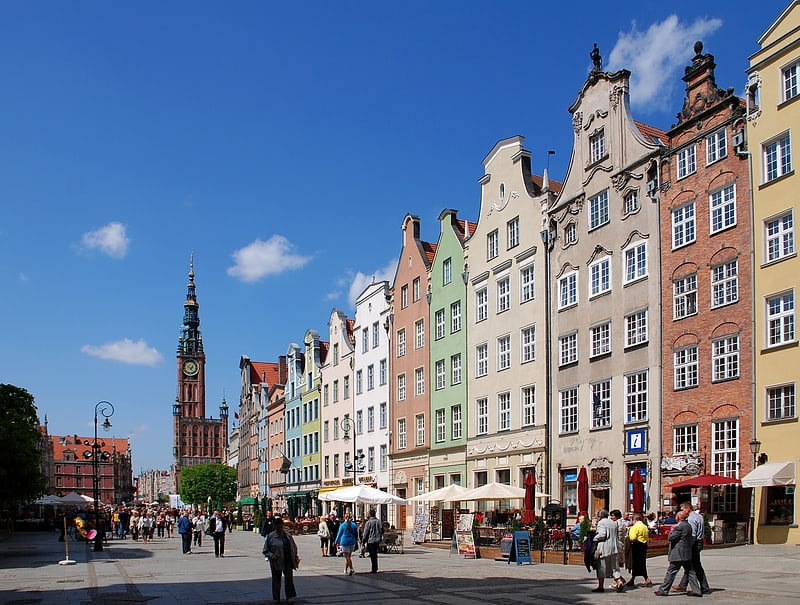
Also known as: Długi Targ
Storied market square with food and shops. Długi Targ or Long Market in Gdańsk, Poland, is one of the most notable tourist attractions of the city. It is situated between the end of Ulica Długa, and the Green Gate.[8]
Neptune's Fountain
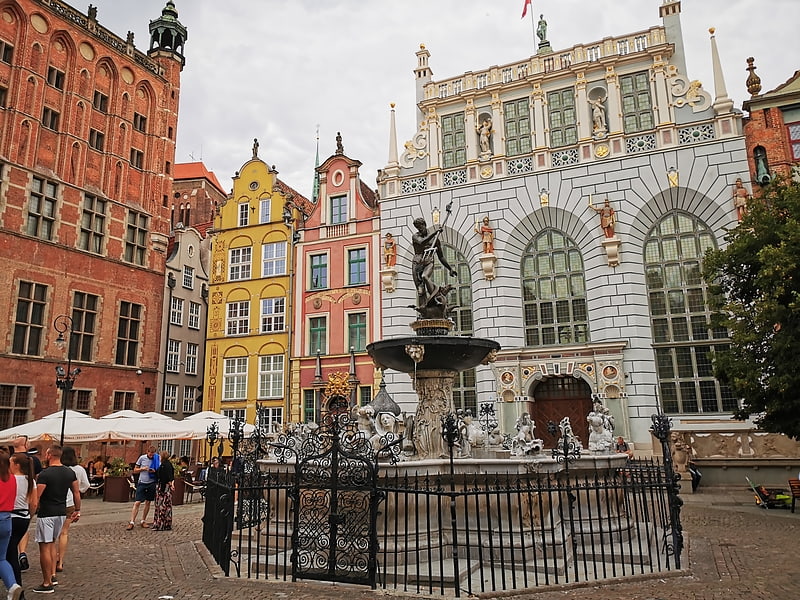
Also known as: Fontanna Neptuna w Gdańsku
Fountain in Gdańsk, Poland. Neptune's Fountain is a historic fountain in Gdańsk, a mannerist-rococo masterpiece, and one of the most distinctive landmarks of the city. The fountain is located at the Długi Targ, in front of the entrance to the Artus Court. It was constructed in the early 17th century. Kashubians use a nickname Krësztof for the sculpture.[9]
Address: Dlugi Targ, Gdańsk
Artus Court
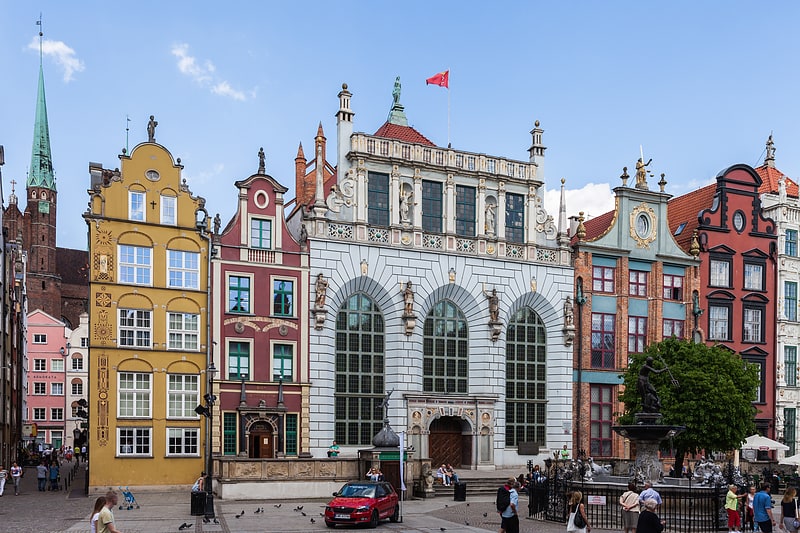
Also known as: Dwór Artusa w Gdańsku
Local history in an old town house. The Artus Court, formerly also Junkerhof, is a building in the centre of Gdańsk, Poland, at Długi Targ 44, which used to be the meeting place of merchants and a centre of social life. Today it is a point of interest of numerous visitors and a branch of the Gdańsk History Museum.[10]
Address: Piwna 36/39, Gdańsk
Golden Gate
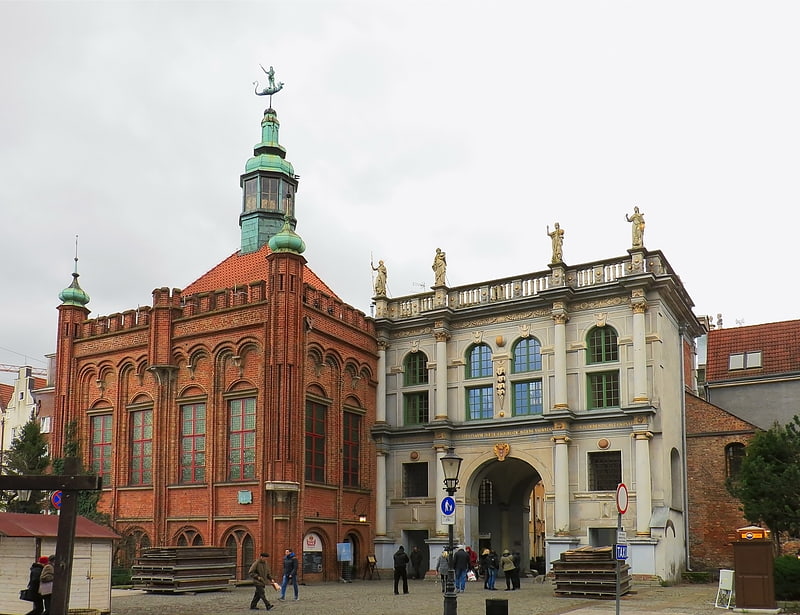
Also known as: Brama Złota w Gdańsku
Historical landmark in Gdańsk, Poland. The Golden Gate is a historic Renaissance city gate in Gdańsk, Poland. It is located within the Royal Route, the most prominent part of the historic city center and is one of its most notable tourist attractions.
It was created in 1612–14 in place of a 13th-century gothic gate, the Brama Długouliczna (Long Street Gate). It is located at one end of Ulica Długa (Long Lane), where, together with Brama Wyżynna (Highland Gate) and Wieża Więzienna (Prison Tower), it forms a part of the old city fortifications.
It was designed by architect Abraham van den Blocke and was built by Jan Strakowski. The architectural style of the gate is Dutch mannerism. Next to it is the late-gothic building of the Brotherhood of St. George.
Both sides of the gate have attiques, with figures symbolizing the qualities of the ideal citizen. They were designed in 1648 by Jeremias Falck ("Polonus"), and reconstructed in 1878 due to the originals being damaged by weathering over time.
From the West side they represent (in Latin): Pax (Peace), Libertas (Freedom), Fortuna (Wealth) and Fama (Fame). From the East (Long Lane) side they are Concordia (Agreement), Iustitia (Justice), Pietas (Piety) and Prudentia (Prudency). The Latin inscription on the gates reads: Concordia res publicæ parvæ crescunt – discordia magnæ concidunt ("In agreement small republics grow, because of disagreement great republics fall").
The gate was largely destroyed by Soviet shelling in World War II, but was rebuilt in 1957. Although most artifacts of Germanness were eradicated after the city became part of the Polish People's Republic in 1945, an original German inscription on the gate was restored in the 1990s: Es müsse wohl gehen denen, die dich lieben. Es müsse Friede sein inwendig in deinen Mauern und Glück in deinen Palästen ("They shall prosper that love thee. Peace be within thy walls, and prosperity within thy palaces." – Psalm 122)[11]
Polish Baltic Philharmonic
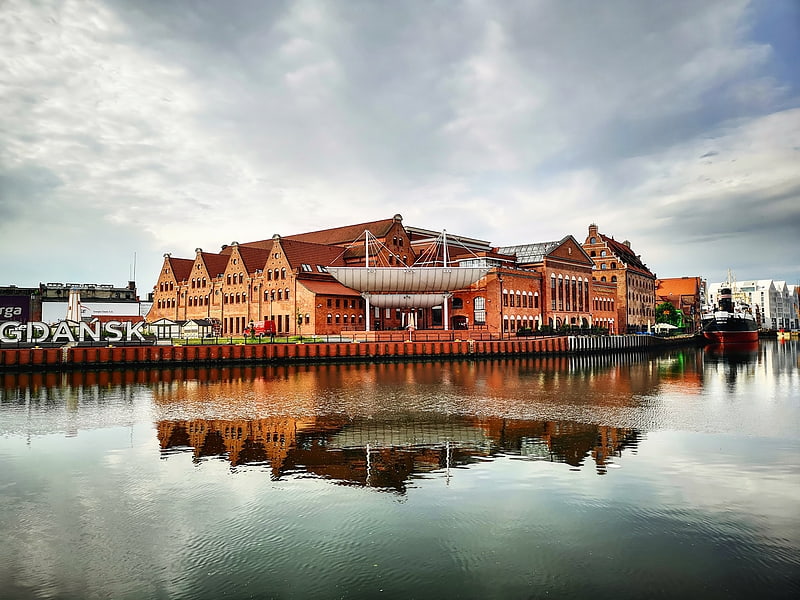
Also known as: Filharmonia Bałtycka
Large concert hall with various events. Polish Baltic F. Chopin Philharmonic in Gdańsk is a concert hall located in Ołowianka, Gdańsk.[12]
Address: Ołowianka 1, 80-751 Gdańsk
European Solidarity Centre
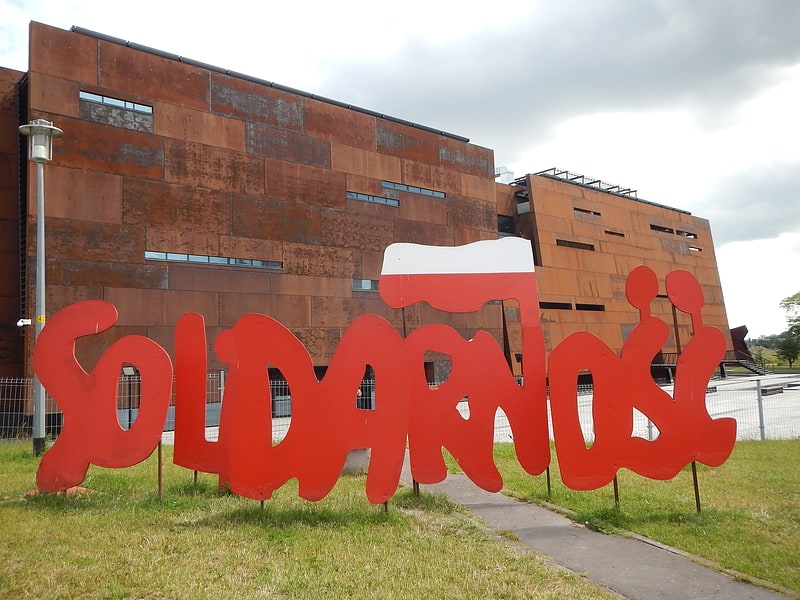
Also known as: Europejskie Centrum Solidarności
Museum in Gdańsk, Poland. The European Solidarity Centre is a museum and library in Gdańsk, Poland, devoted to the history of Solidarity, the Polish trade union and civil resistance movement, and other opposition movements of Communist Eastern Europe. It opened on 31 August 2014.[13]
Address: pl. Solidarnosci 1, 80-863 Gdansk
Ergo Arena
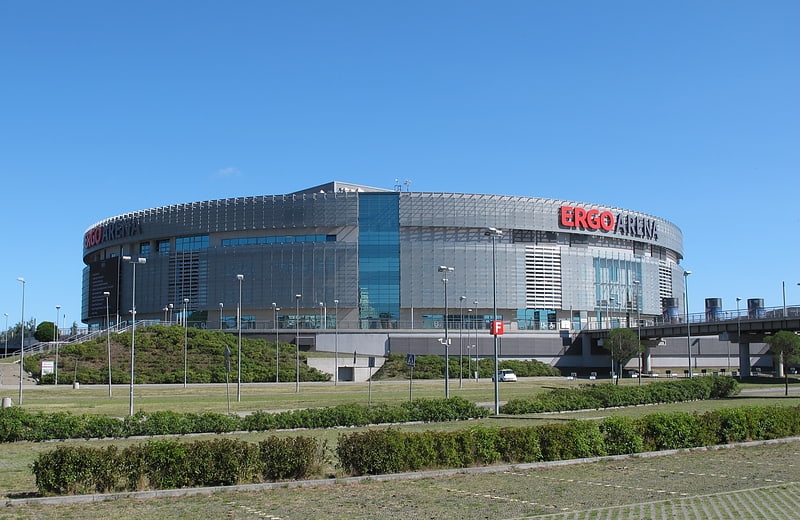
Contemporary sports and concert venue. Ergo Arena is a multi-purpose indoor arena, that was opened in 2010. The boundary between two cities – Sopot and Gdańsk – runs through the very middle of the hall. The arena has a capacity of 11,409 people, for sports events and up to 15,000, with standing places, for concerts.[14]
Address: ul. plac Dwoch Miast 1, 80-344 Gdansk
Gate No 2 of the Gdańsk Shipyard

The Gate No 2 of the Gdańsk Shipyard is one of the gates leading into Gdańsk Shipyard. Because of the gate's proximity to the Shipyard's management buildings as well as its good access to Gdańsk Main City and Gdańsk Główny railway station, the Gate is commonly considered to be the main entrance to the Shipyard.
In 1999, the Gate was included on a list of Objects of cultural heritage in Poland for Pomeranian Voivodeship, under the signature A-1206. In 2014, it received the European Heritage Label as part of the historic complex of the Gdańsk Shipyard's buildings.[15]
National Museum
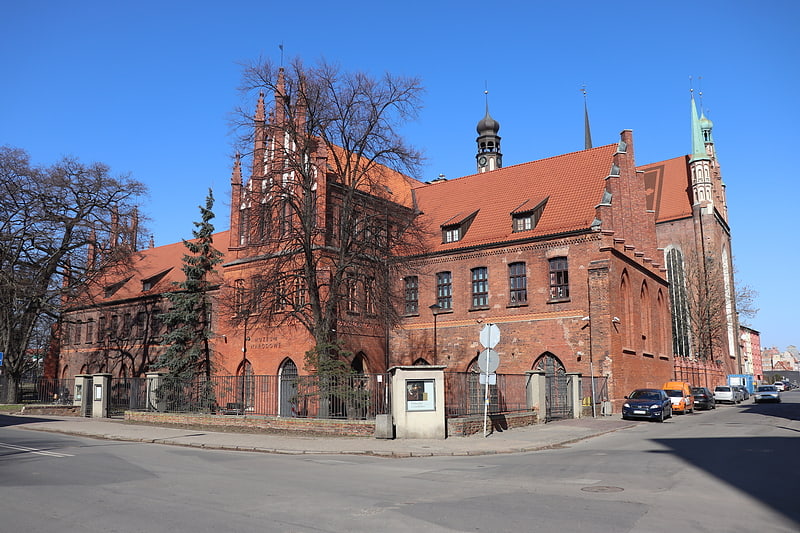
Also known as: Muzeum Narodowe w Gdańsku
Museum in Gdańsk, Poland. The National Museum in Gdańsk, established in 1972 in Gdańsk, is one of the main branches of Poland's national museum system.[16]
Address: Toruńska 1, 80-822 Gdańsk
Cemetery of Lost Cemeteries

Also known as: Cmentarz Nieistniejących Cmentarzy
Cemetery in Gdańsk, Poland. The Cemetery of Lost Cemeteries is a monument that commemorates the necropolis which no longer exists in the city of Gdańsk, Poland.
It is dedicated to the citizens of Gdańsk who were once buried in one of the city’s 27 graveyards either destroyed during World War II or bulldozed on purpose after the end of the war.
The monument was designed to resemble a temple.
The main memorial is surrounded by broken gravestones representing all faiths, and includes a poem by the Jewish poet Mascha Kaléko (1912–1975), whose poetry was burned on the direct orders of Hitler in May 1933.[17]
St. Catherine's Church
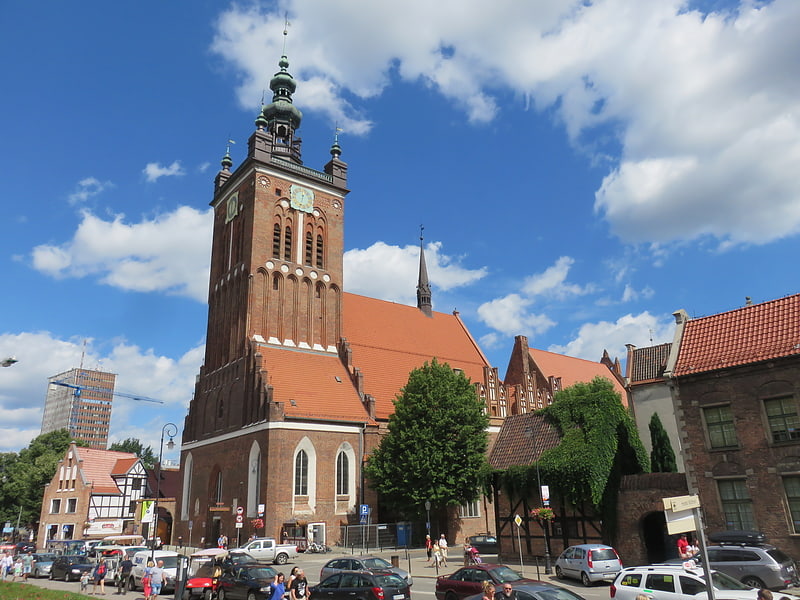
Also known as: Kościół św. Katarzyny w Gdańsku
1300s church with views from bell tower. St Catherine's Church is the oldest church in Gdańsk, Poland. It was a Protestant church from 1545 until the end of World War II in 1945, after which it returned to the Catholic Church.
It houses the world's first pulsar clock (since 2011), the Museum of Turret Clocks (part of the Museum of Gdańsk) and previously (2000-2006) an art gallery (in its attic).
In 2006 it suffered a major roof fire.[18]
Address: Profesorska 3, 80-856 Gdańsk
Targ Węglowy
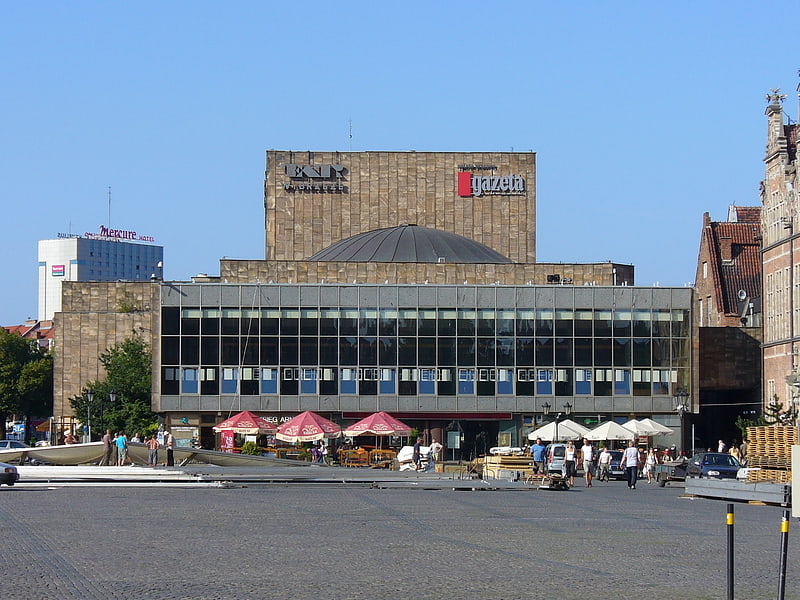
Targ Węglowy is a square in the Main City, Gdańsk, Poland and a part of Royal Road.[19]
Plaża Stogi
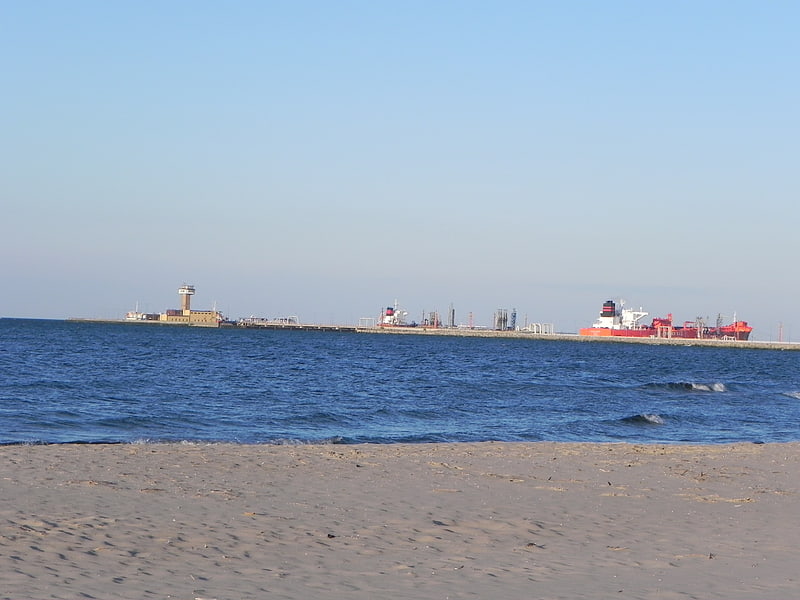
Beach
Address: Wydmy 1, Gdańsk
Łaźnia Centre for Contemporary Art
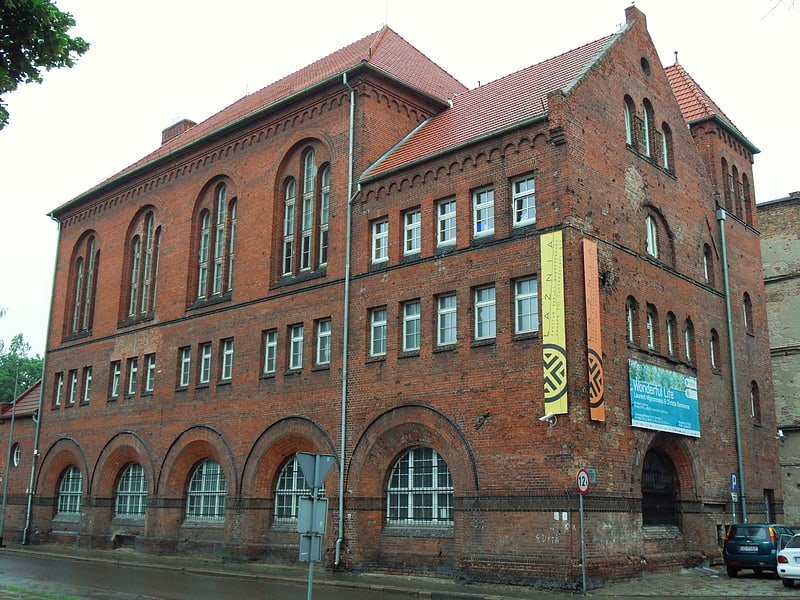
Also known as: Centrum Sztuki Współczesnej „Łaźnia”
Cultural institute in Gdańsk, Poland. The "Łaźnia" Centre for Contemporary Art is a municipal cultural institution and art gallery in the Dolne Miasto district of Gdańsk, Poland, located in the abandoned municipal bathhouse. The word "łaźnia" means "bathhouse" in Polish.[20]
Address: ul. Jaskolcza 1, 80-767 Gdansk
Gdańsk Shakespeare Theatre
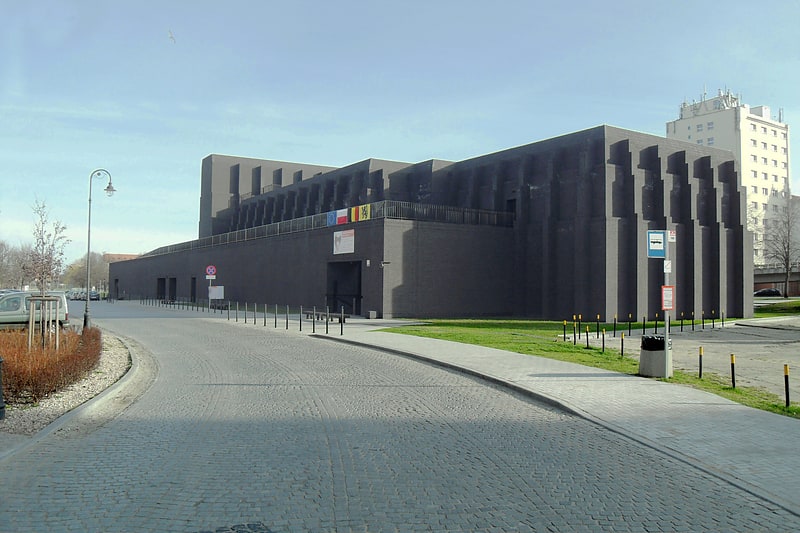
Also known as: Gdański Teatr Szekspirowski
Theatre in Gdańsk, Poland. The Gdańsk Shakespeare Theatre is a Shakespearean theatre in Gdańsk, Poland. It is built on the site of a 17th-century theatre, known as the Fencing School, where English travelling players performed works of English Renaissance theatre. The leading figure in the project to construct the new theatre is Jerzy Limon, a founder of the Gdańsk Shakespeare Festival. It has been built by architect Renato Rizzi in the light of Limon's research which suggests that the Fencing School was modelled on the Fortune Playhouse in London. Though not an attempt at an exact reproduction, the new theatre combines elements from the design of these earlier theatres with modern technology. It opened in September 2014.[21]
Address: ul. Wojciecha Boguslawskiego 1, 80-818 Gdansk
Uphagen's House
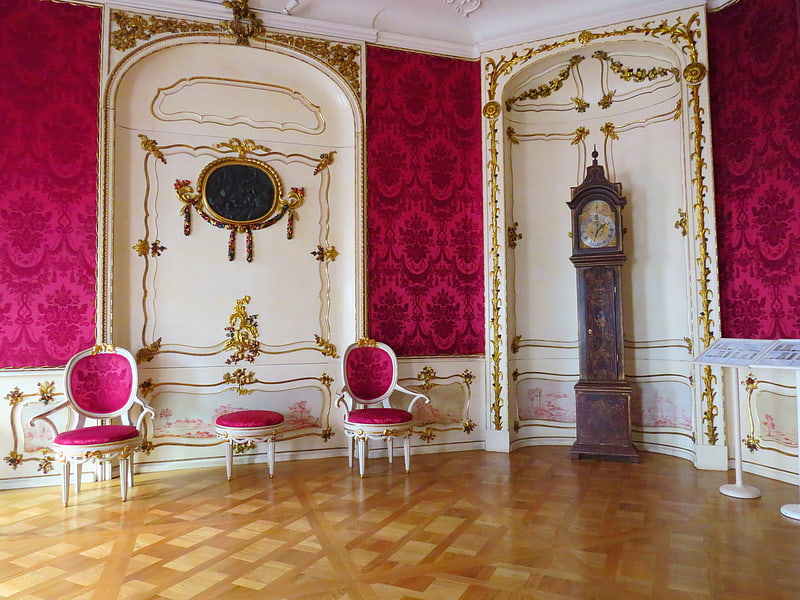
Also known as: Dom Uphagena
Museum in Gdańsk, Poland. The Uphagen House is a reconstructed 18th-century merchant house in Gdańsk, Poland, located at the Ulica Długa within the Royal Route in the historic Main City. It houses a museum, which is a branch of the local historical museum.
The Uphagen house is one of only a few 18th century merchant town houses in Europe that is open to visitors.[22]
Address: Długa 12, 80-827 Gdańsk
Baltic State Opera
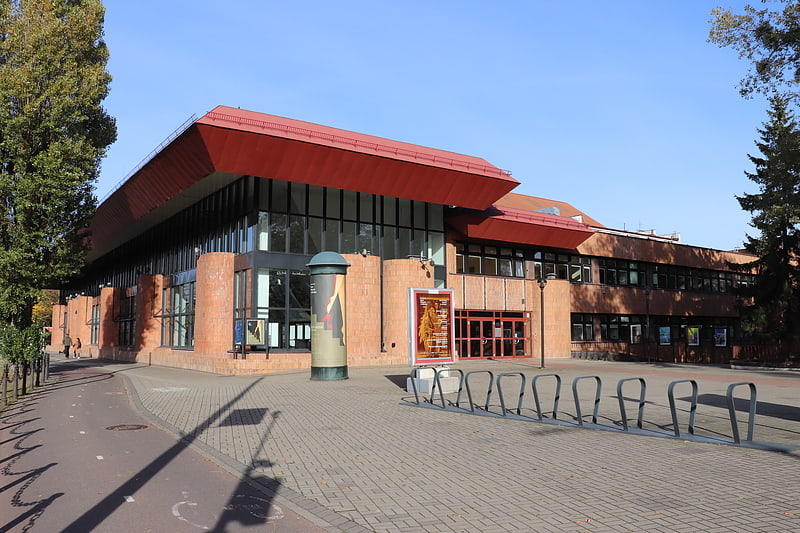
Also known as: Opera Bałtycka
Opera company. Baltic Opera is an opera company located in Gdańsk, Poland.[23]
Address: al. Zwyciestwa 15, 80-219 Gdansk
Highland Gate
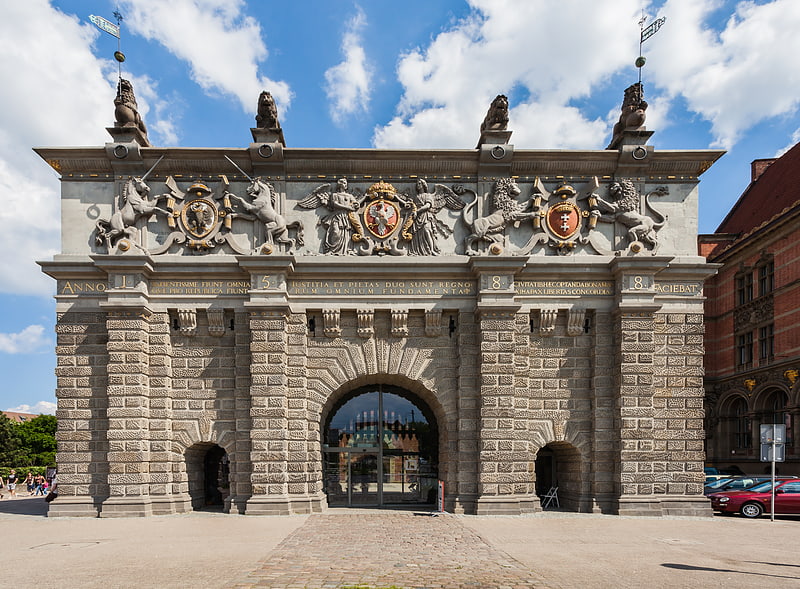
Wyżynna Gate, formerly also "High Gate". - Renaissance city gate in Gdańsk, now on the main car route. Until 1895 it was located in the 16th century fortifications, between St. Elisabeth Bastion and Karowa Bastion and was the main entrance gate to the city, opening the so called Royal Road.
Address: Waly Jagiellonskie 2A, Gdańsk
Port Północny Lighthouse

Also known as: Latarnia Morska Gdańsk Port Północny
Lighthouse in Gdańsk, Poland. Gdańsk Port Północny Lighthouse is a lighthouse in Gdańsk, located on the Polish coast of the Baltic Sea, by the Bay of Gdańsk. It is the youngest lighthouse in Poland; located between the lighthouse in Hel, and the lighthouse in Krynica Morska.
The lighthouse houses the admiralty of the Port of Gdańsk and is not open for the public. The lighthouse is the only lighthouse in Poland to have a lift to get to the top command deck. The lighthouse was built in 1984.[24]
Oliwa
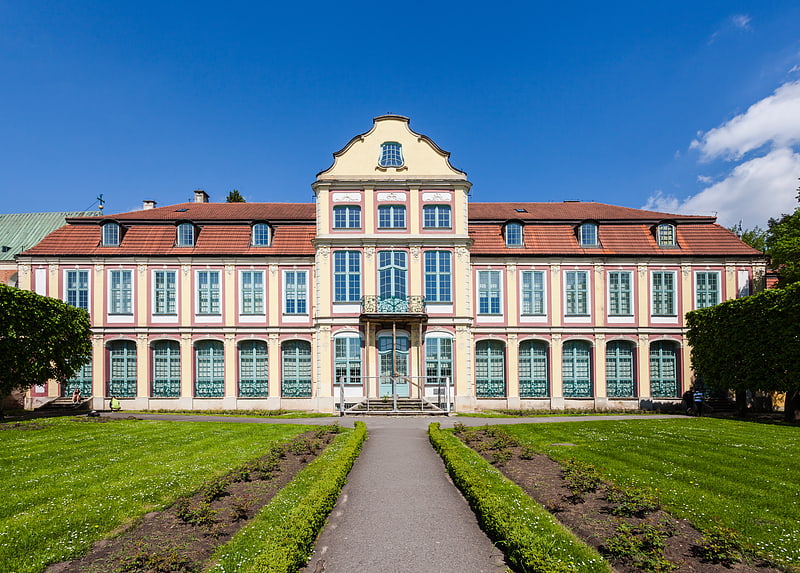
Oliwa, also Oliva, is one of the quarters of Gdańsk, Poland. From east it borders Przymorze and Żabianka, from the north Sopot and from the south with the districts of Strzyża, VII Dwór and Brętowo, while from the west with Matarnia and Osowa. It is known for its medieval monastery, the 1627 Battle of Oliva and the 1660 Peace of Oliva.[25]
Crane over the Motława River

Żuraw Gate, Żuraw - a historic port crane and one of the water gates of Gdańsk, located on the Motława River at the end of Szeroka Street. It is one of the branches of the National Maritime Museum in Gdańsk, and the largest and oldest surviving port crane of medieval Europe.
Address: Rybackie Pobrzeże, 80-761 Gdańsk
Przeróbka
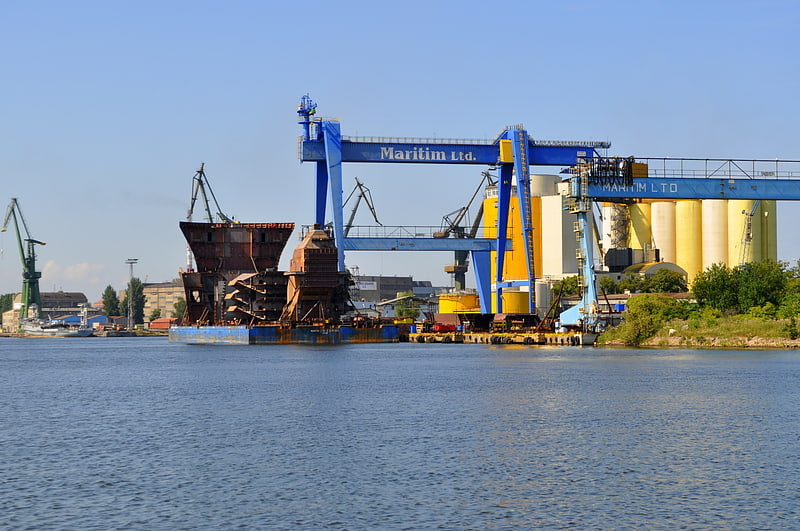
Przeróbka is one of the administrative districts of the city of Gdańsk, Poland with the Westerplatte peninsula in the northwest.[26]
Museum of the Second World War
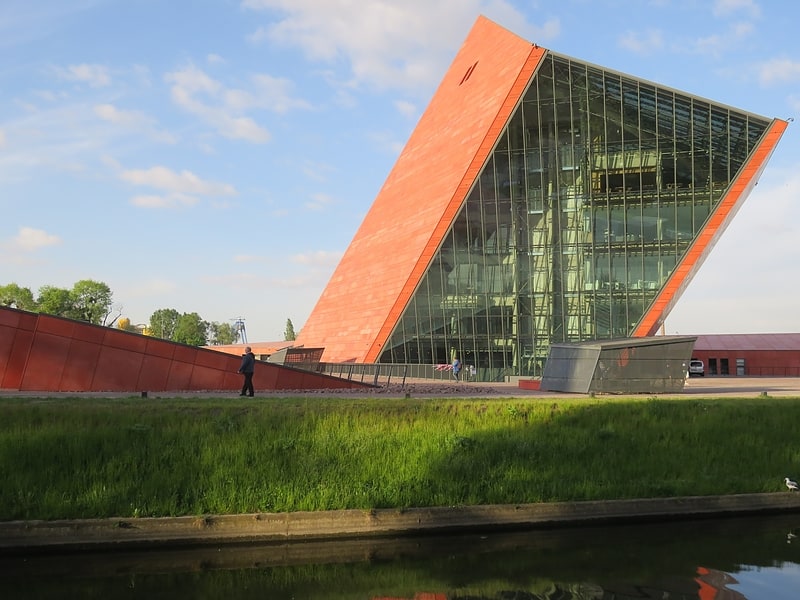
Also known as: Muzeum II Wojny Światowej w Gdańsku
Cultural institute in Gdańsk, Poland. The Museum of the Second World War is a state cultural institution established in 2008 and a museum in Gdańsk, Poland which is devoted to the Second World War.
Kwadrat architectural team won the architectural competition for the building of the Museum of the Second World War in Gdańsk.[27]
Address: Plac Władysława Bartoszewskiego 1, 80-862 Gdańsk
Rudniki

Rudniki is a district of Gdańsk, Poland, located in the eastern part of the city. It is a predominantly industrial district and the Gdańsk Oil Refinery of Grupa Lotos is located within its borders.[28]
Stogi
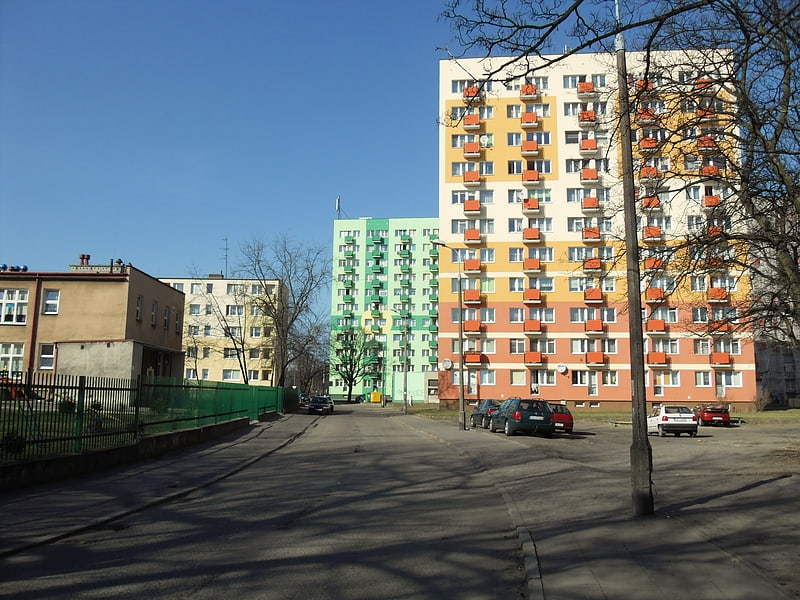
Stogi is one of the administrative districts of the city of Gdańsk, Poland. The district is the central part of the Port Island.[29]
Łostowicki cemetery
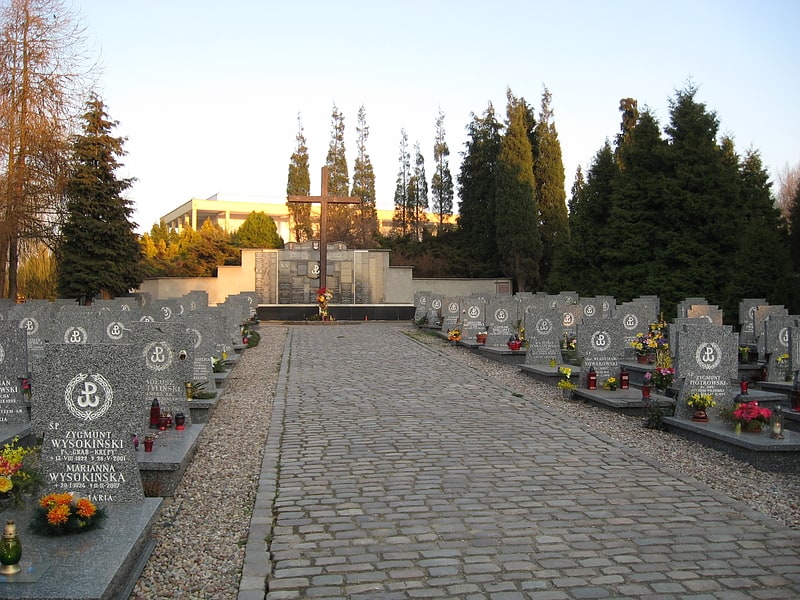
Also known as: Cmentarz Łostowicki
Cemetery in Gdańsk, Poland. Łostowicki cemetery is the largest cemetery in Gdańsk.
The cemetery was founded in 1906. At first it was a local cemetery for the local parish of Saint Francis of Assisi.[30]
Sołdek Ship
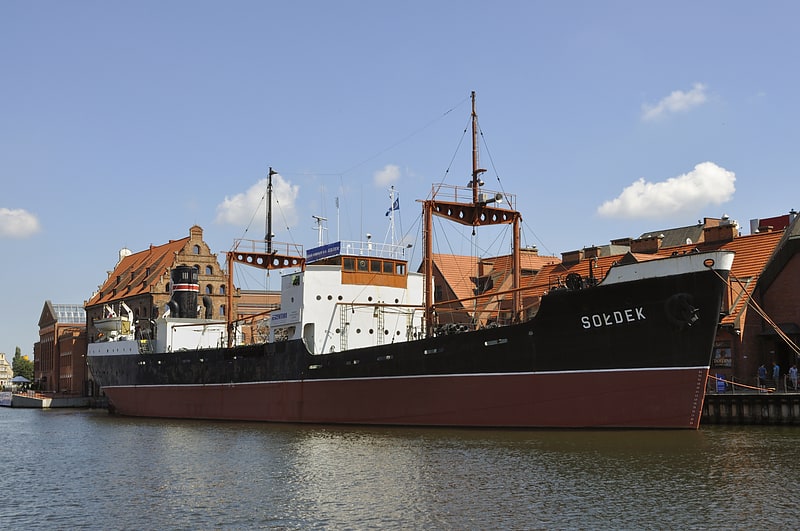
Also known as: SS Sołdek
Historic ship, now a floating museum. SS Sołdek is a retired Polish coal and ore freighter. She was the first ship built in Szczecin after World War II and the first seagoing ship completed in Poland. She was the first of 29 ships classed as Project B30, built between 1949 and 1954 in Stocznia Gdańska. The name was given in honour of Stanisław Sołdek, one of the shipyard's shock workers.
Sołdek is oftently mistaken with the SS Oliwa (a former unfinished Hansa A type cargo ship), which was commissioned after Sołdek, however which's hull was already constructed in 1944. It was abandoned by the Germans on a slipway in Szczecin, and seized by Poland. Following this the hull was completed and the ship launched as Oliwa. Later she was renamed and entered service in 1951 as Marchlewski, serving the Polish Ocean Lines. Many sources incorrectly state that Oliwa was Sołdek's makeshift name during her launch, and that she was later relaunched again as Sołdek.
The ship is currently preserved as a museum ship in Gdańsk, as a part of National Maritime Museum collection.
The ship was used in the movie Persona Non Grata as a Japanese steamer transporting Jews from Vladivostok to Tsuraga.[31]
Address: Ul. Olowianka 9/13, 80-751 Gdansk
Gdańsk astronomical clock
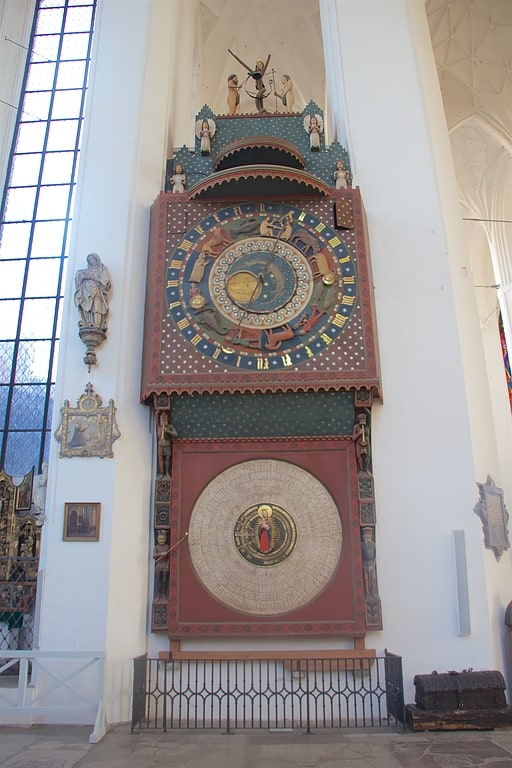
The Gdańsk astronomical clock is a fifteenth-century astronomical clock in St. Mary's Church, Gdańsk.[32]